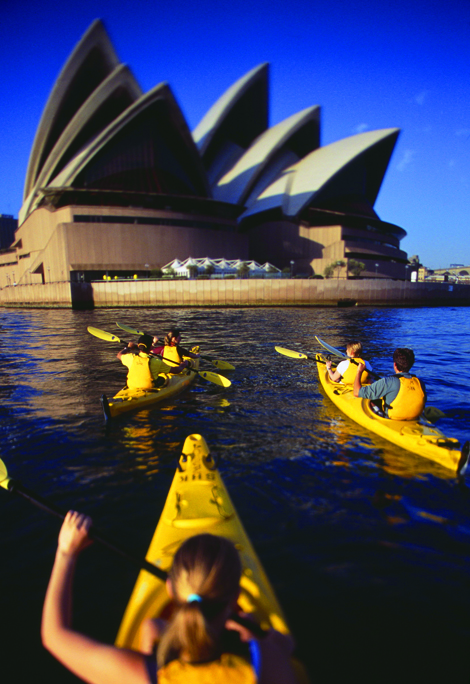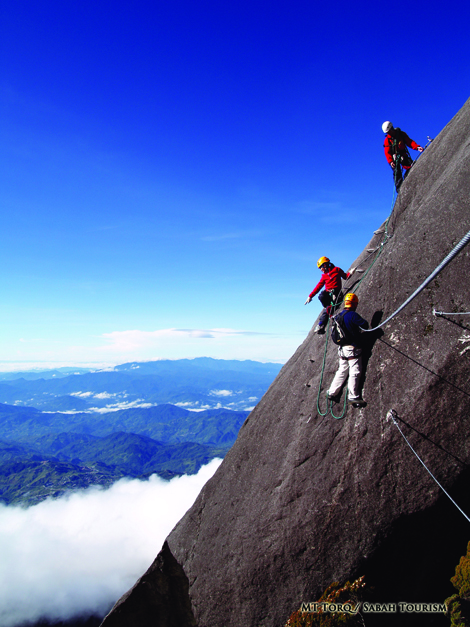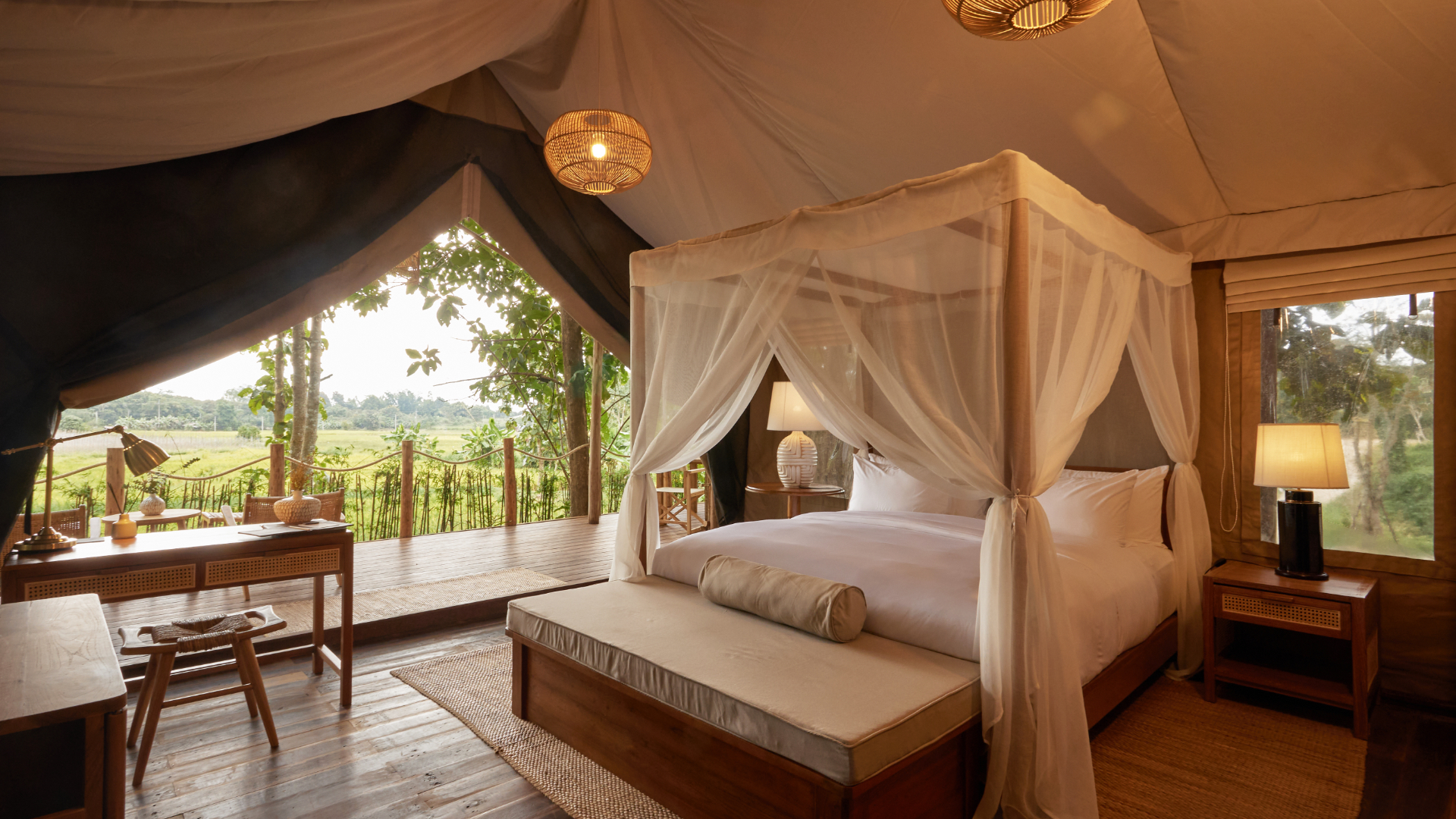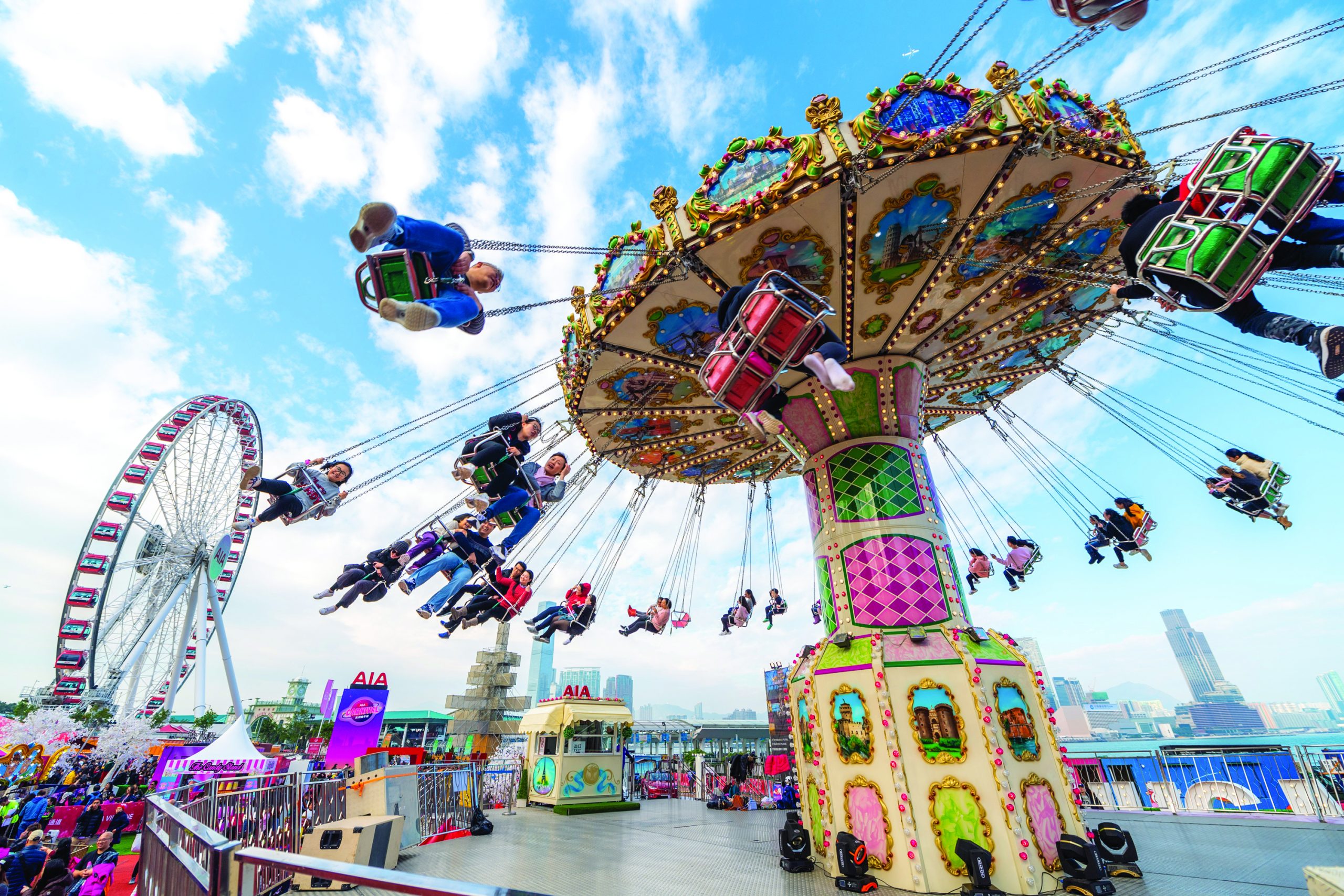Protected by an international conservation treaty, Unesco World Heritage Sites offer memorable experiences. Thanks to increased accessibility and advancing facilities, planners can impress delegates with anything from cocktails in the Himalayas to incentive havens in a Philippines rainforest. Steeped in history and lush, natural beauty, Asia is home to an ample selection of heritage sites. Opt to host an event or retreat at any of the following destinations.
Sydney Opera House (Australia)
HISTORY: In 1956, the New South Wales government opened an international design competition in the hope of attracting the world’s most innovative architects to design a cultural centre for Sydney’s harbour. Over 200 applications were submitted, but it was a design that was rejected by three out of four judges that snagged the final commission by Danish architect Jørn Utzon.

The son of a naval architect, Utzon never actually visited the site where the Opera House now stands. Instead, he used his knowledge of the sea and charts of the harbour to draw up a blueprint, and used his experience of shipbuilding as inspiration for the vaulted shells, or “sails”, recognised across the world. The structure was formally inaugurated in 1973 after 14 years of construction, and houses 1,000 rooms and seven concert venues. It became a Unesco World Heritage Site in 2007.
WHY GO: Sydney Opera House is Australia’s most coveted tourist attraction, and one of the world’s busiest performing arts centres, hosting some 1,900 performances every year. Home to seven performance venues, the Opera House has seven venues available to hire for gala dinners, conferences and product launches, ranging in capacity from 100 for a sit down dinner to 3,000 for cocktails. The Sydney Opera House’s onsite event management services are available to outside planners, while in-house technical crews provide infrastructure for events with staging, lighting and sound.
WHERE TO STAY: Within walking distance of the Opera House is the Intercontinental Sydney, which offers sweeping views of the city and the iconic Sydney Harbour Bridge. Built on the site of the city’s first government house, the Treasury Building, the hotel’s
19th century heritage extends indoors to its rooms and venues, replete with high ceilings and period furnishings. The hotel offers 15 meeting and event rooms that can cater for groups of between eight and 450 reception-style. With its own waterside promenade, The Park Hyatt has five function rooms including the new Guest House, which offers uninterrupted views of the Opera House from its private terrace, ideal for cocktails at sunset.
ACCESSIBILITY: International visitors fly into Sydney Airport, the central hub for Qantas, Jetstar and Virgin Australia. Many nationalities are eligible to enter Australia without a visa as an eVisitor. For details on eVisitor eligibility and visa cost, visit immi.gov.au. Both domestic and international airport terminals are served by the Airport Rail Link, which runs a return trip to the city centre in 20 minutes.
Potala Palace, Tibet
HISTORY: Rising 130,000 metres above the Lhasa valley, Potala Palace was the winter palace of the Dalai Lama. King Songtsen Gampo commissioned its construction
during the reign of the fifth Dalai Lama in the 7th century – a feat that took over 50 years to complete. Divided into two parts, the palace spans 25,000 sqm, comprising the Red and White palaces, used for worship and living quarters respectively.
During the Cultural Revolution, Red Guards destroyed thousands of Tibetan monasteries and temples in an attempt to purge the region of its identity. However, the first premier of the People’s Republic of China Zhou Enlai, was so impressed by the Palace that he sent troops to protect it from being sacked. The current Dalai Lama resided at the palace until his self-exile during the Chinese military occupation of Tibet in 1959. Potala Palace is the centre of Tibetan Buddhism, and was nominated as a Unesco World Heritage Site in 1994.

WHY GO? The Himalayan landscape makes Lhasa a stunning backdrop for business receptions at any of the region's five star hotels, while in the day, delegates can enjoy walks around Lhasa’s old city or trips to Tibet’s famous holy lakes, Yamdrok and Namtso. Explore Tibet arranges tailor-made tours for groups of up to eight people to Lhasa’s main attractions, including Potala Palace, the bustling Bakhor street market and one of the world's largest monasteries, Drepung monastery. Visits to Mount Everest, Kathmandu and around the Tibetan plateau of Mount Kailash are also available with Explore Tibet, which can arrange all-inclusive permits, visas and accommodation for private groups
WHERE TO STAY: Opened this April, the 289-room Shangri-La Lhasa offers flexible options for meeting planners looking to combine incentives with business. The hotel is a special addition to the Hong Kong-based brand, as the original Shangri-La, or "paradise on earth", to which the hotel group owes its inspiration is set in the Himalayas. The hotel's business events space includes the Grand Ballroom, which can seat 1,150 theatre-style, along with four restaurants offering cuisine from across the Himalayan region and the rest of Asia. The Shang Palace is best equipped for business dinners, offering ten private dining rooms and an extensive Yunnanese and Cantonese menu.
The St Regis Lhasa Resort is a six-minute drive from Potala Palace and offers Tibetan spa treatments, yoga, Pilates and cooking classes among its guest activities. A Conference Service Butler is one of the many bespoke services available to meetings planners and delegates at the St Regis, available to assist with needs ranging from planning to event set-up.
ACCESSIBILITY: Lhasa Gonggar Airport has daily connections from Beijing, Chongqing, Chengdu and Xian, and is served by one international route through Kathmandu. Non-Chinese passport holders need a visa to travel to the region, and must engage a licenced travel agency to arrange a Tibet Travel Permit (TTP) and tour. Depending on the applicant's nationality a TTP can cost anything between US$12-120, and can take up to 20 days to process. In 2006, the world's highest railway was completed at 4,000m above sea level, transporting visitors from Beijing to Lhasa through some of the most inhospitable and spectacular landscapes on the planet.
Kinabalu Park, Malaysia
HISTORY: Located on the northern cusp of Borneo, Kinabulu Park is home to Mount Kinabulu, the highest mountain in Southeast Asia at 4,101m. Tourism to the park is driven by mountain climbers looking for a mild climb of two to three days, without special equipment or mountaineering skills. Kinabalu Park became Malaysia’s first national park in 1964, and the country’s first World Heritage Site in 2000. Spanning 4,343 sq km, the park’s terrain varies from sub-alpine forest to tropical lowland, and is home to over 300 varieties of bird and
90 mammal species.

WHY GO? Kinabalu Park is one of the most diverse rainforests in Asia, and a strong incentive destination for nature-going delegates. Amazing Borneo Tours arranges daily excursions to Kinabalu Park for groups between two and 21 people, stopping at handicraft markets and botanical gardens on the way. Within the park, Poring Hot Springs is a popular natural spa with sulphur springs offering respite for climbers who have ascended Mount Kinabalu. High above the springs is Canopy Walkway, where visitors can navigate the forest 40m above the ground by curved suspension bridges that dip between the trees. Ambitious climbers can scale the world’s highest via ferrata (participants are clipped to a steel cable that runs through iron rungs in the mountain) up Mount Kinabalu with Mountain Torq, Southeast Asia’s first mountaineering training centre mountaintorq.com.
WHERE TO STAY: In keeping with Kota Kinabalu’s eco status, the Shangri-La’s Tanjung Aru Resort offsets its carbon footprint with a green meetings package, available to groups of more than 20. The hotel also provides performances and event themes that complement the resort’s lush surroundings, including “Borneo Rainforest” and “Deep Blue” that offer flourishes such as a colourful dance troupe or an aquarium-style boardroom. Gayana Eco Resort has its own Marine Research Centre and giant clam conservation programme. Its over-water bungalows allow delegates direct access to the sea, with diving, snorkelling and other water-based activities on offer gayana-eco-resort.com.
ACCESSIBILITY: Kinabalu International Airport is Malaysia’s second busiest airport
after the capital's, and operates daily services to Kuala Lumpur, Hong Kong and Taipei. Transit from Kota Kinabalu to the national park takes around two hours by car. Most nationalities do not require visas for social or business visits. Check tourism.gov.my for more details.
Puerto Princesa
Subterranean River, Philippines
HISTORY: Often overlooked as an incentive destination, the Philippines is home to a store of natural wonders, not least of which include the Puerto Princesa Subterranean River on the western island of Palawan. A Unesco Heritage site since 1999, the underground river sculpts an 8.2km route through the island's limestone underbelly, forming an enormous chamber filled with stalactites, stalagmites and atmospherically lit lagoons. Before the river reaches the sea, visitors are regaled by cave-dwelling swiftlets and eight species of bat, while in surrounding St Paul Subterranean National Park, porcupines, monitor lizards and macaque monkeys roam. The park comprises some of Asia’s richest tree flora, incorporating eight different forest formations that, together, make the largest and most valuable limestone forest in Asia.
WHY GO? Palawan island is regarded as one of the Philippines’ most scenic regions, while the underground river is a top attraction. Ilink.ph is an online accommodation and tour facilitator that arranges group tours to the river for US$34 per person, with eight people per paddleboat. Ideal for an incentive excursion, the river tour is a whole day venture that includes transfer to the park's nearest town, Sabang, a boatman and guide as well as any additional boat and tax fees that are common within the Philippines.
WHERE TO STAY: The 95-room Sheridan Beach Resort and Spa is located across from Sabang Boat Terminal, from where tour guides depart for the Underground River. Aside from the day trip to the river, delegates can zip wire over Palawan’s transparent waters, go quad biking, climb the island's natural facades or enjoy a boat trip to any of the nearby islands. The hotel is a great option for travellers looking for a one-stop incentive destination with minimal internal travel sheridanbeachresort.com.
ACCESSIBILITY: Puerto Princesa International Airport operates domestic carriers, while international travellers must transit through Manila. Most nationalities can travel to the Philippines for 30 days without a visa, although those from mainland China, Hong Kong and Taiwan must obtain a permit to enter the country. Check tourism.gov.ph for more details. The Puerto Princesa Subterranean National Park exercises a limit of 900 visitors per day to ensure its conservation, and entry permits (US$3.50) to the park can be obtained at the Underground River Booking Office, next to the airport. The park is a 90-minute drive from Puerto Princesa, from which a 20-minute bangka (local ferry) ride will take you to the cave entrance of the river.
Angkor Wat, Cambodia
HISTORY: One of the most important archaeological sites in Southeast Asia, the Angkor Archaeological Park stretches out over some 400 sq km in northwestern Cambodia. The magnificent temple ruins of the country’s ancient Khmer Empire, from the 9th to the
12th century, includes the iconic Temple of Angkor Wat built by King Suryavarman II, and at Angkor Thom, the richly decorated Bayon Temple.

WHY GO? Guided tours take visitors deep into the heart and soul of the country’s past. For a bird's eye view, Helicopters Cambodia (helicopterscambodia.com) offers flights over Angkor Wat and further afield to remote sites not easily accessible by road, including the largely unrestored temple of Preah Khan, and the massive complex of Banteay Chhmar in Thma Puok District that remained largely undiscovered for about 800 years.
The park is closed to the public after nightfall, however planners can arrange to hire the grounds for private evening events. Earlier this year, Google hosted a candle-lit gala dinner for media and government officials in the grounds of Bayon Temple to celebrate the launch of street view imagery of Angkor on Google Maps. The event was organised by brand marketing and communications company, Phibious. Other event and tour organisers include Beyond Unique Escapes (beyonduniqueescapes.com/mice) and Destination Asia (destination-asia.com/cambodia/corporate-travel).
WHERE TO STAY: The gateway city of Siem Reap, 3m from the park entrance, is home to traditional guesthouses and five-star hotels with extensive event space. The 180-room Park Hyatt Siem Reap has multiple indoor and outdoor venues, including two spacious function rooms and a courtyard garden ideal for cocktails and al fresco dining. Raffles Grand Hotel d’Angkor, across from the Royal Palace in the old French Quarter, is surrounded by 15 acres of landscaped gardens that can be used for welcome cocktails, gala dinners and themed events. There is also the 80 sqm Le Grand Room and a 468 sqm poolside terrace that can accommodate up to 450 for cocktails.
ACCESSIBILITY: Siem Reap-Angkor International Airport, Cambodia's second largest airport provides non-stop services to several major regional markets including Bangkok, Hanoi, Kuala Lumpur, Ho Chi Minh City, Phnom Penh, Seoul and Singapore. Most visitors to the kingdom require a tourist visa that can be obtained upon arrival or online through the Ministry of Foreign Affairs (mfaic.gov.kh). Some nationalities are required to apply for a visa in their home country prior to travel. Check tourismcambodia.com for details.



